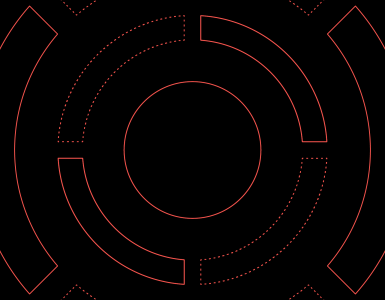Consider that you have created a revolutionary application. It’s taking off at a never-before-seen pace.
But as user numbers soar, so do the challenges your backend infrastructure faces. Without a robust and optimized backend, your application crashes. Your users are frustrated, and slowly, the application bugs are driving your users away. This is where backend performance optimization becomes crucial.
Maintaining scalability, dependability, and a smooth user experience even with the highest loads is the goal of backend performance.
We’ll explore backend performance optimization tactics and best practices in this blog to manage heavy traffic.
What is backend performance optimization?
Backend performance optimization involves a set of practices crafted to enhance the efficiency and speed of server-side processes. These practices may include
- optimizing database queries
- implementing effective caching strategies
- improving server resource management
- scaling the infrastructure appropriately.
The principal objective is to optimize the user experience. Using performance optimization you can mitigate latency and guarantee the application’s responsiveness. This is especially true for high traffic situations.
High traffic can significantly strain backend systems. This leads to
- slow response times
- complete system failures.
Impact of High Traffic
High traffic impacts backend performance in several ways. Key areas that are often affected include:
Server Response Time
With increasing traffic server response time can increase. This leads to slower page loads and a degraded user experience.
Studies show that even a one-second delay in page load time can cause a 7% reduction in conversions. It can also lead to an 11% decrease in page views.
Database Performance
High traffic can lead to increased demand on the database, causing slow query responses if the database is not optimized or properly indexed.
For instance, as traffic increases, a badly designed database may result in increasingly longer response times. Amazon discovered that a website’s delay of 100 milliseconds lost them 1% in sales.
Resource Utilization
CPU and memory usage can spike under heavy load. It leads to server crashes if the infrastructure is not scaled adequately.
Research indicates that 40% of users will abandon your web page if it takes more than three seconds to load. This highlights the critical need for efficient resource utilization.
API Performance
For applications relying on APIs, high traffic can result in delayed responses or timeouts if the API endpoints are not optimized for performance.
According to a study, API response times can be affected significantly under load, and a 500ms delay in API response time can lead to a 26% increase in user abandonment.
Assess Current Backend Performance
First, you must determine where your backend stands in terms of performance. This step is critical for identifying bottlenecks and opportunities for improvement.
Monitoring Tools
Effective monitoring is the backbone of backend performance optimization. Here are some essential tools to consider:
- New Relic: This tool provides real-time monitoring and detailed performance analytics. It helps you track server response times, database query performance, and the overall health of your infrastructure. New Relic’s dashboards and alerts can help you quickly identify and address performance issues.
- Prometheus: Known for its robust time-series database, Prometheus is excellent for monitoring and alerting. It can scrape metrics from your applications and infrastructure, allowing you to set up detailed performance monitoring and receive alerts when something goes awry.
- Grafana: Often used along with Prometheus, Grafana offers powerful visualization capabilities. It enables you to create dynamic dashboards that display key performance metrics, helping you to visualize trends and pinpoint issues.
Key Metrics
Once you have the right tools in place, the next step is to focus on the key metrics that matter most for backend performance.
- Server Response Time: This metric measures how long it takes for your server to respond to a request. It’s a crucial indicator of user experience; shorter response times generally lead to better user satisfaction. Tools like New Relic can help you track response times in real time and identify slow endpoints.
- Database Query Performance: One of the main causes of backend performance bottlenecks can be slow database queries. You can determine which queries are taking too long and why by keeping an eye on query performance. To obtain comprehensive information on query execution times, you can utilize database profiling tools that are integrated with your monitoring system.
- CPU and Memory Usage: Excessive CPU and memory utilization may be a sign that your servers are having trouble handling the demand. Keeping an eye on these resources can help you determine whether your application code needs to be optimized or whether your infrastructure needs to be scaled.
Optimize Server Load Handling
Without proper load-handling strategies, your servers can quickly become overwhelmed. Let’s explore some key techniques:
Efficient Load Balancing
Load balancing is one of the most effective approaches to distribute traffic across multiple servers, ensuring no single server becomes a bottleneck.
- Round Robin: This is a straightforward method where incoming requests are distributed sequentially across a pool of servers. It works best in environments where servers have similar capabilities and loads are relatively equal.
- Least Connections: This method directs traffic to the server with the fewest active connections. This helps to balance the load more effectively, as traffic load can vary significantly between requests.
- IP Hashing: Requests are distributed based on the client’s IP address. This ensures that a user’s requests are consistently directed to the same server.
Server Caching
Implementing caching strategies serves frequently requested data from memory instead of querying the database or performing complex computations each time.
- In-Memory Caching: Tools like Redis and Memcached store frequently accessed data in memory, enabling faster data retrieval. This is particularly useful for caching session data, query results, and user profiles.
- Content Delivery Networks (CDNs): CDNs cache static assets like images, CSS, and JavaScript files closer to the user’s location. By offloading the delivery of these assets to the CDN, your servers can focus on processing dynamic requests.
Content Delivery Network (CDN) Usage
CDNs distribute content across a geographically dispersed server network. This reduces the distance data must travel and improves load times for users worldwide.
- Static Content Distribution: CDNs work wonders for sharing static content like images and videos since they hardly change. CDNs put files on edge servers. It lighten the load on your main servers and speeds up access for users by cutting down on delays.
- Dynamic Content Acceleration: Some advanced CDNs offer dynamic content acceleration. It can speed up the delivery of dynamically generated content by optimizing network paths and using advanced routing techniques.
Improve Scalability
Scalability is key to ensuring your backend can grow with increasing user demands without compromising performance.
Horizontal vs. Vertical Scaling
You should know the difference between horizontal and vertical scaling. It is fundamental to optimize backend performance for scalability.
- Vertical Scaling: This involves adding more power (CPU, RAM) to your existing servers. It’s straightforward and often requires minimal changes to your application. But it has limitations. There’s a ceiling to how much you can scale a single server. It can become cost-inefficient beyond a certain point.
- Horizontal Scaling: To manage the load, this technique entails deploying more servers. Although more complicated, it provides more scalability and flexibility. Applications that must manage high traffic volumes without a single point of failure must use horizontal scaling.
Microservices Architecture
Adopting a microservices design can dramatically improve your application’s scalability. A microservices architecture divides your application into smaller, independent services that may be created, deployed, and scaled separately.
- Decoupling Services: You can scale each component independently based on its specific load requirements.
- Improved Fault Isolation: Microservices enhance fault isolation. This means a failure in one service is less likely to impact the entire system.
Containerization
Using containerization technologies like Docker and Kubernetes can streamline the process of deploying and managing scalable applications.
- Docker: It’s a magic box that packs everything your app needs to work smoothly, making it easy to carry around and run on any computer setup.
- Kubernetes: It is your super-efficient assistant. It takes care of all the heavy lifting when it comes to managing those magic boxes. It ensures your apps are always up and running, adjusts their size based on how much they’re being used, and even fixes them if something goes wrong.
Database Optimization
Database optimization is the process of fine-tuning database performance to enhance efficiency, speed, and scalability.
Indexing Strategies
Indexes act as a roadmap, enabling the database engine to swiftly locate relevant data. Best practices for indexing include:
- Identify High-Volume Queries: Begin by analyzing your application’s workload to identify frequently executed queries.
- Choose Index Columns Wisely: Opt for columns that are frequently used in WHERE clauses, JOIN conditions, or ORDER BY clauses.
- Regularly Monitor and Tune Indexes: As your application evolves, revisit your indexing strategy periodically. Adjust indexes based on changes in query patterns or database performance.
Database Sharding
Database sharding encompasses horizontally partitioning data across multiple servers. This helps to distribute the workload and enhance scalability. Key considerations for database sharding include:
- Sharding Key Selection: Choose a sharding key that evenly distributes data and minimizes hotspots. Common sharding keys include user IDs, timestamps, or geographic locations.
- Data Consistency: Implement mechanisms to ensure data consistency across shards, such as distributed transactions or eventual consistency models.
- Scaling Out: As your application grows, add additional shards to accommodate increased demand.
Query Optimization
Poorly optimized queries can cause higher latency, resource congestion, and a poor user experience.
- Use Proper Indexes: Refer to the indexing strategies discussed earlier to ensure that your queries leverage appropriate indexes.
- Minimize Result Set Size: Retrieve only the necessary data by selecting specific columns and avoiding SELECT * queries.
- Avoid Costly Operations: Be cautious of operations like table scans, sorting, and joins, which can impose significant overhead. Optimize queries to minimize these operations whenever possible.
Reducing Backend Latency
Backend latency reduction refers to cutting down on the amount of time it takes for an application’s server-side components to process requests and provide results.
Asynchronous Processing
Synchronous processing can become a bottleneck in busy contexts, slowing down reaction times and degrading system performance in general. Time-consuming operations can be delegated to queues or background processes through asynchronous processing.
Key benefits of asynchronous processing include:
- Improved Responsiveness
- Scalability
- Fault Tolerance
Edge Computing
Edge computing brings computation closer to the point of data generation or consumption. This reduces latency and improving performance for distributed applications. When you deploy compute resources at the network edge, you can process data locally, minimizing round-trip times to centralized servers.
Key benefits of edge computing include:
- Reduced latency
- Bandwidth conservation
- Enhanced privacy and security
Optimizing API Performance
APIs enable seamless communication between disparate systems. However, poorly performing APIs can degrade overall system performance and hinder user experience.
To optimize API performance, consider the following strategies:
- Reduce the size of API responses by transmitting only essential data. Use compression techniques like GZIP to further reduce payload size.
- Cache frequently requested API responses. Leverage in-memory caches or distributed caching solutions to store and retrieve data efficiently.
- Design API endpoints with efficiency in mind, ensuring that they adhere to RESTful principles and provide granular resource representations.
Wrapping up
Gaining mastery of backend performance is crucial to making sure that apps with heavy traffic run smoothly.
As your application expands, don’t forget to keep an eye on and adjust backend systems to maintain peak performance.
Keep up with the latest developments in backend optimization and fulfill the expectations of today’s busy work settings.






Add comment